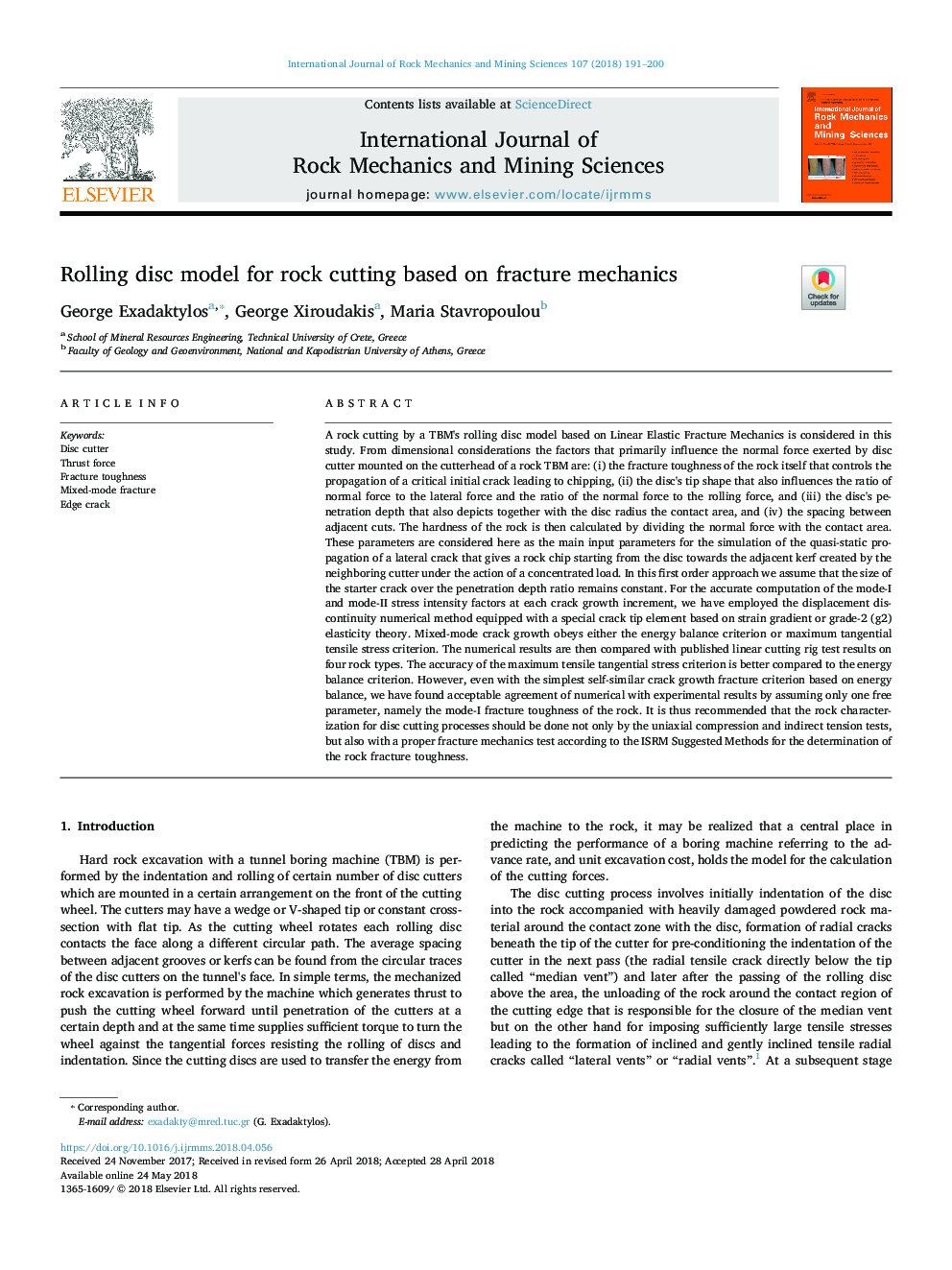| کد مقاله | کد نشریه | سال انتشار | مقاله انگلیسی | نسخه تمام متن |
|---|---|---|---|---|
| 7206143 | 1468662 | 2018 | 10 صفحه PDF | دانلود رایگان |
عنوان انگلیسی مقاله ISI
Rolling disc model for rock cutting based on fracture mechanics
ترجمه فارسی عنوان
مدل دیسک نورد برای برش سنگ بر اساس مکانیک شکستگی
دانلود مقاله + سفارش ترجمه
دانلود مقاله ISI انگلیسی
رایگان برای ایرانیان
کلمات کلیدی
دیسک برش، نیروی محرک، چقرمگی شکستگی، شکستگی متقابل حالت، کرک لبه،
موضوعات مرتبط
مهندسی و علوم پایه
علوم زمین و سیارات
مهندسی ژئوتکنیک و زمین شناسی مهندسی
چکیده انگلیسی
A rock cutting by a TBM's rolling disc model based on Linear Elastic Fracture Mechanics is considered in this study. From dimensional considerations the factors that primarily influence the normal force exerted by disc cutter mounted on the cutterhead of a rock TBM are: (i) the fracture toughness of the rock itself that controls the propagation of a critical initial crack leading to chipping, (ii) the disc's tip shape that also influences the ratio of normal force to the lateral force and the ratio of the normal force to the rolling force, and (iii) the disc's penetration depth that also depicts together with the disc radius the contact area, and (iv) the spacing between adjacent cuts. The hardness of the rock is then calculated by dividing the normal force with the contact area. These parameters are considered here as the main input parameters for the simulation of the quasi-static propagation of a lateral crack that gives a rock chip starting from the disc towards the adjacent kerf created by the neighboring cutter under the action of a concentrated load. In this first order approach we assume that the size of the starter crack over the penetration depth ratio remains constant. For the accurate computation of the mode-I and mode-II stress intensity factors at each crack growth increment, we have employed the displacement discontinuity numerical method equipped with a special crack tip element based on strain gradient or grade-2 (g2) elasticity theory. Mixed-mode crack growth obeys either the energy balance criterion or maximum tangential tensile stress criterion. The numerical results are then compared with published linear cutting rig test results on four rock types. The accuracy of the maximum tensile tangential stress criterion is better compared to the energy balance criterion. However, even with the simplest self-similar crack growth fracture criterion based on energy balance, we have found acceptable agreement of numerical with experimental results by assuming only one free parameter, namely the mode-I fracture toughness of the rock. It is thus recommended that the rock characterization for disc cutting processes should be done not only by the uniaxial compression and indirect tension tests, but also with a proper fracture mechanics test according to the ISRM Suggested Methods for the determination of the rock fracture toughness.
ناشر
Database: Elsevier - ScienceDirect (ساینس دایرکت)
Journal: International Journal of Rock Mechanics and Mining Sciences - Volume 107, July 2018, Pages 191-200
Journal: International Journal of Rock Mechanics and Mining Sciences - Volume 107, July 2018, Pages 191-200
نویسندگان
George Exadaktylos, George Xiroudakis, Maria Stavropoulou,
